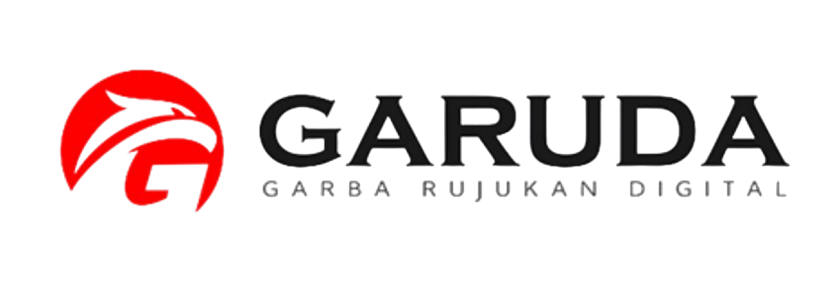Author Guidelines
TITLE CONTAINS THE SUMMARY OF THE FINDINGS, WRITTEN IN INDONESIAN OR ENGLISH MAXIMUM 15 WORDS. TITLE WRITTEN WITH CAPITAL LETTERS ARIAL (SPACE 1, FONT 14, BOLD, CENTER), NO NEED TO WRITE THE RESEARCH PLACE
First author1*, Second author2, Third author3 etc (12 pt)
(Full written name is listed below the article title without the main author's academic title written first)
1First author institution (9 pt)
2Second author institution (9 pt)
3Third author institution (9 pt)
(write the name of the University/ Institution, if more than one author from different institutions is written in different lines. If the author comes from the same institution then no coding is given) (9 pt)
*Email correspondency author (format italic)(9pt)
ABSTRACT
The English and Indonesian abstract contains the introduction, objectives, methods, results and conclusions, written in one paragraph of a maximum of 200 words. Written in arial font format,9 pt, spaced 1, italic, and right and left aligned.
Keywords: 3-5 words or a combination of words, each word is separated by a semicolon (;)
INTRODUCTION ( Arial 11 pt)
The introduction section contains the background, a clear formulation of the problem, literature review and research objectives. In the background there must be a gap analysis, so that it can describe originality with other research. The entire introduction is presented in an integrated manner in the form of several paragraphs; 15-20% of the content of the article.
METHOD (Arial 11 pt)
The method section contains an explanation of the research design, population, sample, variables, time and place, data collection tools and techniques, and data analysis; 15-20% of articles. Explain the research design in detail in order to describe the research process as a whole. The implementation of the research involves anyone with what kind of role and in what way. This research has passed the ethical review and is attached at the time of article submission.
RESULTS AND DISCUSSION (Arial 11pt)
The results and discussion section is a unit containing an explanation of the results of the analysis related to the objectives. Each research result is directly discussed. The discussion contains the meaning of research results which include facts, theories and opinions. Tables, pictures or illustrations are written according to the serial number of appearance in the text and given a short title (title of the table or picture is 11 pt), while the contents of the table are 10 pt; long exposure to results and discussion of 50-60% of articles.
CONCLUSION (Arial 11pt)
The conclusion section contains research findings in the form of answers to research questions or in the form of a summary of the results of the discussion, implications of research results and recommendations can also be added. Narrative writing, a maximum of 5% of the entire content of the article.
ACKNOWLEDGEMENT (Arial 11 pt)
In this section, thanks are written to various parties who have provided assistance in the research carried out, thanks can be given to laboratory technicians or research fund donors.
REFERENCES (Arial 11 Ft Left Right)
The reference list only contains sources that are referenced in the contents of the article and are in the form of literature published in the last 10 years (for journals). The references used are primary sources in the form of research articles in journals or research reports. The total number of references is at least 15, which comes from a minimum of 12 journals.
The writing of the reference list is arranged like the example at the end of the writing guide which shows a list of alphabetical and chronological order. Reference writing and reference list used in this journal is an automatic computer citation writing system with Harvard writing style. Citation manager software can use any of: Mendeley, Refworks, Endnote, and Zotero.
BOOK
Hidayat, AA. 2008. Metode Penelitian Keperawatan dan Teknik Analisa Data. Penerbit Salemba Medika, Jakarta.
JOURNAL
Bertolino, P., Deckers, M., Lebrin, F., ten Dijke, P. 2005. Transforming Growth Factor-P Signal Transduction in Angiogenesis and Vascular Disorders. Chest. 128. 585S-590S
PROSIDING
Salmah. 2006. Aplikasi Permainan Dinamis Linear Kuadratis Sistem Deskriptor pada Interaksi Fiskal di EMU, dalam Prosiding Konferensi Nasional Matematika XIII UNNES, 24 – 27 Juli 2006, hlm. 815 – 821
BOOK CHAPTER
Mardianto, T. (2013) ‘Konsep Pemberdayaan Masyarakat’, in Ilmu Kesehatan Masyarakat. 4th edn. Surakarta: UNS Press.
THESIS, DISSERTATION, RESEARCH REPORTS
Kusumastuti, W. R. (2015) Hubungan Asupan Zat Gizi Makro (Energi, Protein, Lemak, Karbohidrat) terhadap Status Gizi Pasien Gagal Ginjal Kronik Rawat Jalan dengan Hemodialisis di RSUD dr. Moewardi. Universitas Muhammadiyah Surakarta.
REPORT
Dinas Kesehatan Kota Depok (2018) Profil Kesehatan Kota Depok Tahun 2017. Depok.








1.png)
